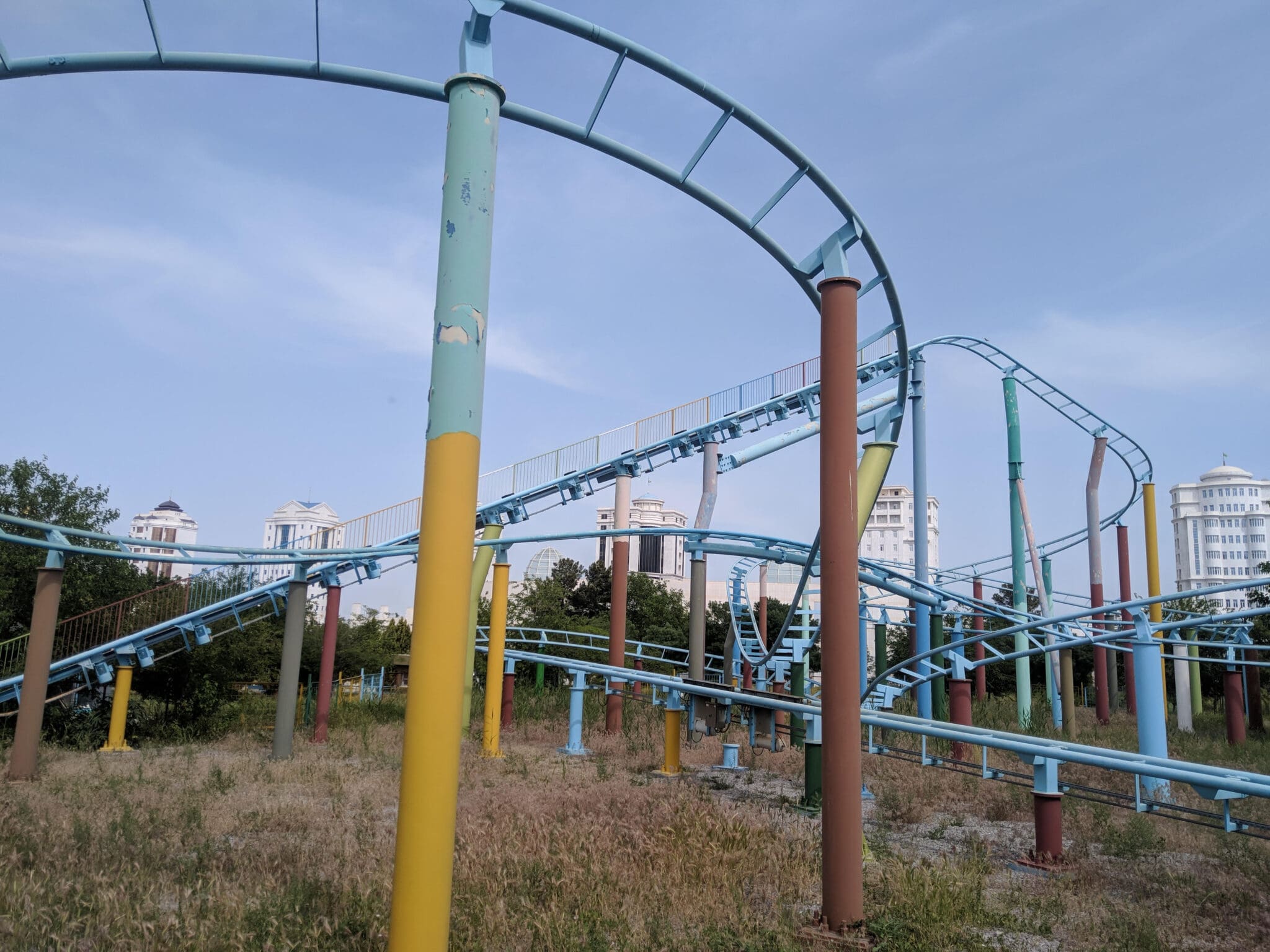In the USSR, having a city meant having a theme park — no exceptions. Opened in 1928, Moscow’s Gorky Park amazed spectators with rides that showcased the epitome of Marxist-Leninist mechanical ingenuity whilst familiarising the masses with proletarian recreation.
Prior to the ascendancy of the Bolsheviks, parks were meeting places for ‘undesirables,’ but the regeneration of public space was so lauded within the Communist Party that similar projects began appearing everywhere from Estonia to Tajikistan.
The revolutionary zeal, however, didn’t necessarily translate into good theme parks in their backwater republics. The rides at these glorified community fairs were mass-produced out of scrap metal and often shaped like rocket ships to applaud the achievements of the Soviet space program. Their jagged angles and harsh lines evoke some kernel of their constructivist roots, but it doesn’t make them particularly comfortable to sit in, as I soon discovered during my journey to Central Asia. The whole endeavour appeared to be imagined by elderly hardliners in the nomenklatura who could only interpret fun through the praxis of Marxist ideology.
One benefit of the great merrymaking plan is that the rides are insanely cheap. A cable car ride in Almaty still only costs two dollars, allowing the working class to unite with their gondola comrades through leisure. There’s also a sort of self-congratulatory spirit imbued into the parks. As with the space-themed rides, most larger parks house a tiny building that offers 5D, 6D, and even 10D movies. I couldn’t figure out what exactly these multi-D cinemas entailed but was assured they were far superior to the 3D or — God forbid — 2D cinemas of the decadent West. And an entertainment centre on the outskirts of Ashgabat hosts the largest (enclosed) Ferris wheel in the world.
Even the less ostentatious rides have propagandistic potential by eliciting emotions antithetical to the new way of life (fear, nausea, etc.) within the confines of state property, which can subsequently be purged (sometimes quite literally), opening you up to the possibility of more communism. But the fear is justified. Public safety was never high on the politburo’s list of concerns (see: Chernobyl) and amusement parks were no exception. Just a month after I left, a flying saucer ride in Jizzakh snapped in half mid-ride, killing one person. I should be thankful that the rollercoaster operators in Turkmenistan were kind enough to test the machine to “make sure it works” before letting me jump on.
Lurking amongst the brakeless dodgem cars and tetanus-infested umbrella rides, there’s nearly always one or two nightmarish creature statues from local folklore, made from leftover concrete and given a cheap paint job; a sort of lip service to the purported, yet never properly realised, autonomy of the individual Soviet republics. To emphasise this point, many parks hosted socialist realist monuments of fallen socialist heroes that overshadowed their mythical counterparts. Most of these Bolsheviks were toppled in the years following the dissolution of the USSR, but some states still enraptured in communist nostalgia haven’t felt the same burning need. In Kyrgyzstan’s Panfilov Park, you can still see a 10-metre bronze effigy of Vladimir Lenin keeping watch over the rides with his heavy, judgemental eyes, prompting you to stop playing and get back to work for the good of your country.
In other Central Asian states, the role of the theme park has since been appropriated to suit a more pressing concern for national identity out of the crimson rubble of the Soviet Union. An amusement park I visited in Nukus was renamed after Amir Timur — Uzbekistan’s newly instated national hero, and the guy responsible for killing 5% of the world’s population in his lifetime — who is synonymous with fun and good times.
In the more eccentric republic of Turkmenistan, the World of Turkmenbashi Tales (colloquially, Turkmen Disneyland) is supposedly based on local mythology as espoused from the mouth of the late-President for Life Saparmurat “Turkmenbashi” Niyazov. A more accurate description, however, would be Disneyland as imagined by someone who has never seen a Disney film and had the concept of fun lectured to them in a re-education camp. Despite it being 1 p.m. on a Saturday, it was completely empty when I arrived. I followed off-brand 8-bit music, past waterless water rides and animatronic penguins in top hats, until I found a bored woman behind a ticket booth who was genuinely surprised that the park had any visitors.
Predictably, international theme park aficionados aren’t huge fans of the offerings available in the Stans, often describing them on TripAdvisor as “awful,” “the worst,” or “total disgrace[s].” But there’s something strangely beautiful about Soviet and post-Soviet demonstrations of public entertainment. The awkward attempts at recreating recreation all lay in varying states of disrepair as if they were relics of dreams that could never properly materialise. In any case, they’re something to do in a region notorious for poor internet speeds. As one local guide said of Dustlik Park Razvlecheniy in Tashkent: “Better a poor horse than no horse at all.”





